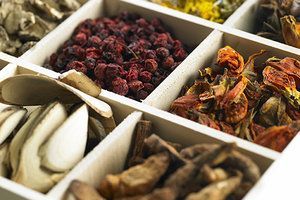People today want convenience, whether it be from their bank, credit card, favorite retail store, or restaurant. They demand it from the companies who hold their loyalty, including their health care providers (you). They don’t want to call and possibly be put on hold, and they want to use an app or schedule an appointment on your website. Here are three reasons your practice can gain by switching to online appointment scheduling.
AHPA is Taking the Lead: A Proactive Approach to Herbal Safety
New Guidelines
The American Herbal Products Association (AHPA) and Chinese Herbal Products Committee (CHPC) has taken the lead when it comes to defining "Good Herbal Compounding and Dispensing Practices." May 15 of this year AHPA released a white paper outlining these methods for herbalists. According to Bill Egloff owner of Crane Herb Pharmacy and chair of AHPA's Chinese Herbal Products committee, this is a "first step" in moving towards educating Traditional Chinese Herbal Medicine (TCHM) practitioners about quality preparation standards.
These are mentioned in the Food and Drug Administration (FDA) Good Manufacturing Practices (GMP) regulatory guidelines. He notes that, "since these regulations have been in place since 2007, it's a good time to take a closer look at the relevant areas to deliver quality and safety for our patients." The white paper guidelines illustrate numerous aspects including: product quality verification, herb compounding, staff training, equipment calibration (scales), sanitation, labeling, records keeping and a great deal more.

According to Egloff, this document will continue to be a "work in progress" for the state-licensed and (often) nationally-certified (NCCAOM) TCHM practitioner. The white paper was designed to be a basis for all herbal compounding disciplines. However, according to Egloff, TCHM practitioners might benefit from a future version of the guidelines that address the TCHM community.
Best Practices
The reason why the "Good Herbal Compounding and Dispensing Practices" white paper has gained momentum is specifically due to the CHPC commitment to quality and safety. Often when practice standards change, it is because they have to; because there is pressure reduce harm, risk and negligence.
In this case, this is a forward thinking example of self-regulation and how the TCHM community shows the ability to see areas that need improvement before a crisis hits. Practitioners benefit from knowing regulatory aspects of their TCHM practice. For example, there are specific details that every practitioner can become familiar with to remain compliant with "discretionary enforcement."
Herbalists and acupuncturists are specifically mentioned in the FDA preamble to the Dietary Supplement GMP's as follows: "…We declined to exempt herbalist practitioners from the proposed rule. We continue to believe that the risks adulteration is not eliminated just because the practitioner is an herbalist, and therefore, such an exemption should not be included in this final rule. However, after further consideration, we have determined that it would be appropriate for us to consider the exercise of our enforcement discretion in deciding whether to apply the requirements of this final rule to certain health care practitioners, such as herbalists, acupuncturists, naturopaths, and other related health care providers."
A Suggested Review
The regulations state that the application of enforcement discretion (which means exceptions on a "case-by-case basis") is based on:
- "Adequate training in the professional practice."
- "An individual client and practitioner relationship."
- Herbs in commerce that "have no known or suspected safety concerns."
Practitioners of TCHM are branding themselves and the medicine with every herb prescription. They are change agents when they prepare herb-prescriptions for patients at the highest level of quality and diligence. TCHM Practitioners can better communicate with the medical community in full integrity when they understand and follow best practices.
For these reasons, I recommend every TCHM practitioner carefully review the white paper and keep a copy in the clinic. It can serve as an educational tool for patients and medical colleagues. Thanks to AHPA, a complementary copy of the white paper is available at: http://ahpa.org/Portals/0/PDFs/Policies/Guidance-Documents/AHPA_Good_Herbal_Compounding_Dispensing_Practices.pdf.
The "Good Herbal Compounding and Dispensing Practices"white paper is aptly dedicated to the memory of Al Stone (a fierce herbalist) on the CHPC. He was passionate about keeping TCHM practice guidelines authored by those who understand the practice best. His inspiration kept the dialogue open about this project so that today we can stand proud as the community that delivers the first copy to the greater herb practitioner community. Herbal practitioners also owe a great "thanks" to AHPA's Michael McGuffin and Jane Wilson for their support in producing this paper.
Supporting the Cause
The following communities also share the wisdom of these guidelines: The American Herbalist Guild, American Association of Naturopathic Physicians, American Society of Acupuncturists, American Association of Acupuncture and Oriental Medicine, National Certification Commission for Acupuncture and Oriental Medicine, Chinese Herb Trade Association of America, and American Association of Chinese Medicine and Acupuncture.
Don't be the last herbalist on your block to know what "Good Herbal Compounding and Dispensing Practices" mean for you and your patients.



